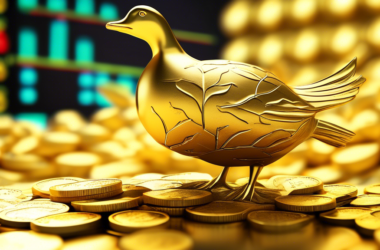Table of Contents Show
Think Twice Before Investing in That High-Yield Dividend Stock: Explore These 2 Superior Alternatives
High-yield dividend stocks – those seemingly irresistible sirens of the investment world, promising a torrent of passive income. But before you dive headfirst into the allure of sky-high yields, consider this: sometimes, those enticing dividends are a smokescreen, masking underlying weaknesses within a company. A high yield can be a desperate attempt to attract investors, not a sign of robust financial health.
Chasing yield without conducting thorough due diligence can be a recipe for disaster. Remember, a dividend is only as good as the company that pays it. If the company falters, your dividend stream could dry up, and your principal investment could take a hit.
Unmasking the Risks of High-Yield Dividend Stocks
While a juicy dividend yield might seem like a gold mine, it’s crucial to remember that high yields often signal underlying risks, including:
1. Unsustainable Payout Ratios:
The dividend payout ratio, calculated by dividing annual dividends per share by earnings per share, is a critical metric to assess dividend sustainability. A high payout ratio, especially one exceeding 100%, indicates that the company is distributing more in dividends than it’s earning. This scenario is unsustainable in the long run and could lead to dividend cuts or, worse, a suspension of dividend payments altogether.
2. Business Struggles and Declining Profits:
A struggling business model, declining revenues, or shrinking profit margins can force companies to offer high dividend yields to maintain investor interest. However, these high yields are often a red flag, indicating that the company is struggling to generate sufficient earnings to cover its dividend obligations. Investing in such companies can lead to capital depreciation, offsetting any potential gains from dividend income.
3. Debt Overburdened Operations:
Companies with heavy debt loads often resort to high dividend payouts to attract investors and maintain their stock prices. However, high debt levels can hinder a company’s ability to invest in growth opportunities, innovate, or weather economic downturns. Moreover, rising interest rates can make it increasingly challenging for debt-laden companies to manage their debt obligations, potentially forcing them to make difficult choices, including dividend cuts.
The Smarter Approach: Prioritizing Sustainable Dividends
Instead of falling prey to the allure of high yields, savvy investors focus on identifying companies with a proven track record of dividend growth and sustainability. Here’s what to look for:
1. Consistent Earnings Growth:
Companies with a history of consistent earnings growth are better positioned to sustain and even increase their dividend payouts over time. Look for companies with a solid track record of revenue and earnings growth, indicating a healthy and thriving business model.
2. Strong Cash Flow Generation:
Cash flow is king, especially when it comes to dividends. A company’s ability to generate strong free cash flow—the cash left over after covering operating expenses and capital expenditures—is crucial for maintaining and growing its dividend distributions.
3. Low Payout Ratios:
A low dividend payout ratio signifies that the company is retaining a significant portion of its earnings, providing a cushion for dividend payments even during challenging economic times. Aim for companies with a payout ratio below 70%, indicating a healthy balance between dividend distributions and reinvestment in the business.
Moving Beyond Yield: Diversification is Key
Regardless of how tempting a high-yield dividend stock may appear, remember that diversification is crucial for long-term investment success. Avoid putting all your eggs in one basket, even if that basket seems to overflow with dividends. Instead, diversify your portfolio across various asset classes, sectors, and industries. This approach helps mitigate risk and potentially enhances returns over time.
Two Compelling Alternatives to High-Yield Dividend Traps
Investing in companies with sustainable dividends, supported by solid fundamentals, is paramount for long-term success. Here are two potential alternatives to consider:
Alternative 1: A Dividend Aristocrat with a History of Growth
[Insert Company Name], a member of the prestigious Dividend Aristocrats index, boasts a remarkable track record of increasing its dividend payouts for [Number] consecutive years. The company operates in the [Industry] sector and has a well-established market presence. [Company Name] demonstrates consistent earnings growth, strong cash flow generation, and a reasonable payout ratio, making it an attractive option for income-seeking investors.
Alternative 2: A Dividend Contender Poised for Future Growth
[Insert Company Name], while not yet a Dividend Aristocrat, has consistently increased its dividend for [Number] consecutive years. Operating in the [Industry] sector, [Company Name] demonstrates significant growth potential. The company’s commitment to returning value to shareholders, combined with its solid financials and promising growth prospects, makes it a compelling choice for dividend investors seeking both income and potential capital appreciation.Conclusion: Think Long-Term, Invest Wisely
While high-yield dividend stocks might seem alluring, it’s essential to look beyond the surface and consider the underlying fundamentals. Remember that sustainable dividends are the result of a healthy and profitable business. By conducting thorough research, prioritizing companies with a history of dividend growth and strong financials, and diversifying your portfolio, you can position yourself for long-term investment success without falling prey to the potential pitfalls of high-yield dividend traps.










